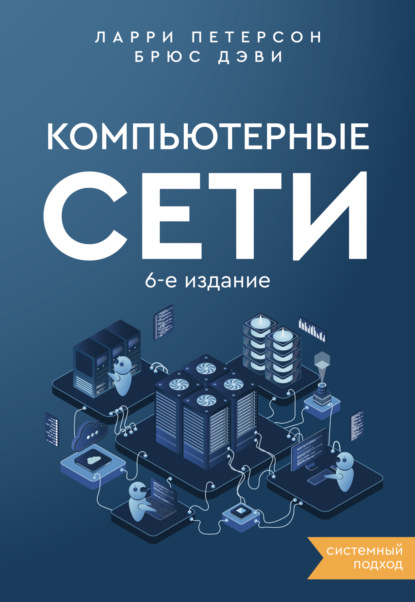
Полная версия
Атлас искусственного интеллекта: руководство для будущего
84
For a superb account of the history of undersea cables, see Starosielski, Undersea Network.
85
Dryer, «Designing Certainty,» 45.
86
Dryer, 46.
87
Dryer, 266-68.
88
More people are now drawing attention to this problem – including researchers at AI Now. See Dobbe and Whittaker, «AI and Climate Change.»
89
See, as an example of early scholarship in this area, Ensmenger, «Computation, Materiality, and the Global Environment.»
90
Hu, Prehistory of the Cloud, 146.
91
Jones, «How to Stop Data Centres from Gobbling Up the World’s Electricity.» Some progress has been made toward mitigating these concerns through greater energy efficiency practices, but significant long-term challenges remain. Masanet et al., «Recalibrating Global Data Center Energy – Use Estimates.»
92
Belkhir and Elmeligi, «Assessing ICT Global Emissions Footprint»; Andrae and Edler, «On Global Electricity Usage.»
93
Strubell, Ganesh, and McCallum, «Energy and Policy Considerations for Deep Learning in NLP.»
94
Strubell, Ganesh, and McCallum.
95
Sutton, «Bitter Lesson.»
96
«AI and Compute.»
97
Cook et al., Clicking Clean.
98
Ghaffary, «More Than 1,000 Google Employees Signed a Letter.» See also «Apple Commits to Be 100 Percent Carbon Neutral»; Harrabin, «Google Says Its Carbon Footprint Is Now Zero»; Smith, «Microsoft Will Be Carbon Negative by 2030.»
99
«Powering the Cloud.»
100
«Powering the Cloud.»
101
«Powering the Cloud.»
102
Hogan, «Data Flows and Water Woes.»
103
«Off Now.»
104
Carlisle, «Shutting Off NSA’s Water Gains Support.»
105
Materiality is a complex concept, and there is a lengthy literature that contends with it in such fields as STS, anthropology, and media studies. In one sense, materiality refers to what Leah Lievrouw describes as «the physical character and existence of objects and artifacts that makes them useful and usable for certain purposes under particular conditions.» Lievrouw quoted in Gillespie, Boczkowski, and Foot, Media Technologies, 25. But as Diana Coole and Samantha Frost write, «Materiality is always something more than ‘mere’ matter: an excess, force, vitality, relationality, or difference that renders matter active, self-creative, productive, unproductive.» Coole and Frost, New Materialisms, 9.
106
United Nations Conference on Trade and Development, Review of Maritime Transport, 2017.
107
George, Ninety Percent of Everything, 4.
108
Schlanger, «If Shipping Were a Country.»
109
Vidal, «Health Risks of Shipping Pollution.»
110
«Containers Lost at Sea–2017 Update.»
111
Adams, «Lost at Sea.»
112
Mumford, Myth of the Machine.
113
Labban, «Deterritorializing Extraction.» For an expansion on this idea, see Arboleda, Planetary Mine.
114
Ananny and Crawford, «Seeing without Knowing.»
115
Wilson, «Amazon and Target Race.»
116
Lingel and Crawford, «Alexa, Tell Me about Your Mother.»
117
Federici, Wages against Housework; Gregg, Counterproductive.
118
In The Utopia of Rules, David Graeber details the sense of loss experienced by white-collar workers who now have to enter data into the decision-making systems that have replaced specialist administrative support staff in most professional workplaces.
119
Smith, Wealth of Nations, 4–5.
120
Marx and Engels, Marx-Engels Reader, 479. Marx expanded on this notion of the worker as an «appendage» in Capital, vol. 1: «In handicrafts and manufacture, the worker makes use of a tool; in the factory, the machine makes use of him. There the movements of the instrument of labor proceed from him, here it is the movements of the machine that he must follow. In manufacture the workers are parts of a living mechanism. In the factory we have a lifeless mechanism which is independent of the workers, who are incorporated into it as its living appendages.» Marx, Das Kapital, 548–49.
121
Luxemburg, «Practical Economies,» 444.
122
Thompson, «Time, Work-Discipline, and Industrial Capitalism.»
123
Thompson, 88–90.
124
Werrett, «Potemkin and the Panopticon,» 6.
125
See, e. g., Cooper, «Portsmouth System of Manufacture.»
126
Foucault, Discipline and Punish; Horne and Maly, Inspection House.
127
Mirzoeff, Right to Look, 58.
128
Mirzoeff, 55.
129
Mirzoeff, 56.
130
Gray and Suri, Ghost Work.
131
Irani, «Hidden Faces of Automation.»
132
Yuan, «How Cheap Labor Drives China’s A. I. Ambitions»; Gray and Suri, «Humans Working behind the AI Curtain.»
133
Berg et al., Digital Labour Platforms.
134
Roberts, Behind the Screen; Gillespie, Custodians of the Internet, 111–40.
135
Silberman et al., «Responsible Research with Crowds.»
136
Silberman et al.
137
Huet, «Humans Hiding behind the Chatbots.»
138
Huet.
139
See Sadowski, «Potemkin AI.»
140
Taylor, «Automation Charade.»
141
Taylor.
142
Gray and Suri, Ghost Work.
143
Standage, Turk, 23.
144
Standage, 23.
145
See, e. g., Aytes, «Return of the Crowds,» 80.
146
Irani, «Difference and Dependence among Digital Workers,» 225.
147
Pontin, «Artificial Intelligence.»
148
Menabrea and Lovelace, «Sketch of the Analytical Engine.»
149
Babbage, On the Economy of Machinery and Manufactures, 39–43.
150
Babbage evidently acquired an interest in quality-control processes while trying (vainly) to establish a reliable supply chain for the components of his calculating engines.
151
Schaffer, «Babbage’s Calculating Engines and the Factory System,» 280.
152
Taylor, People’s Platform, 42.
153
Katz and Krueger, «Rise and Nature of Alternative Work Arrangements.»
154
Rehmann, «Taylorism and Fordism in the Stockyards,» 26.
155
Braverman, Labor and Monopoly Capital, 56, 67; Specht, Red Meat Republic.
156
Taylor, Principles of Scientific Management.
157
Marx, Poverty of Philosophy, 22.
158
Qiu, Gregg, and Crawford, «Circuits of Labour»; Qiu, Goodbye iSlave.
159
Markoff, «Skilled Work, without the Worker.»
160
Guendelsberger, On the Clock, 22.
161
Greenhouse, «McDonald’s Workers File Wage Suits.»
162
Greenhouse.
163
Mayhew and Quinlan, «Fordism in the Fast Food Industry.»
164
Ajunwa, Crawford, and Schultz, «Limitless Worker Surveillance.»
165
Mikel, «WeWork Just Made a Disturbing Acquisition.»
166
Mahdawi, «Domino’s ‘Pizza Checker’ Is Just the Beginning.»
167
Wajcman, «How Silicon Valley Sets Time.»
168
Wajcman, 1277.
169
Gora, Herzog, and Tripathi, «Clock Synchronization.»
170
Eglash, «Broken Metaphor,» 361.
171
Kemeny and Kurtz, «Dartmouth Timesharing,» 223.
172
Eglash, «Broken Metaphor,» 364.
173
Brewer, «Spanner, TrueTime.»
174
Corbett et al., «Spanner,» 14, cited in House, «Synchronizing Uncertainty,» 124.
175
Galison, Einstein’s Clocks, Poincaré’s Maps, 104.
176
Galison, 112.
177
Colligan and Linley, «Media, Technology, and Literature,» 246.







